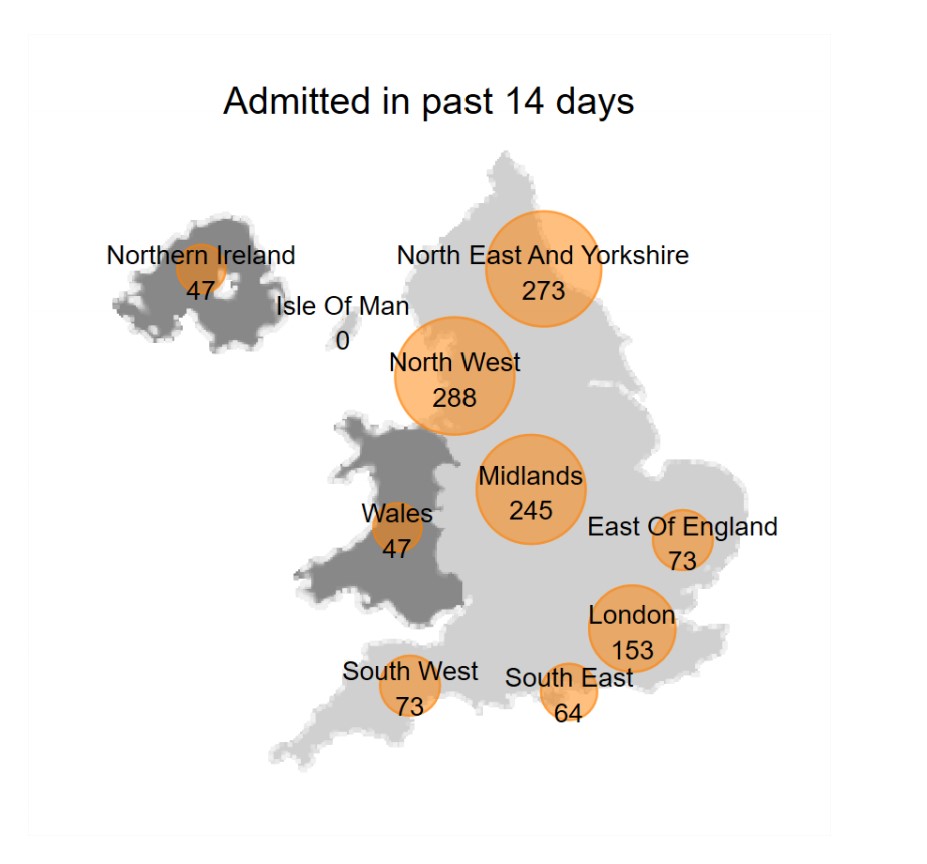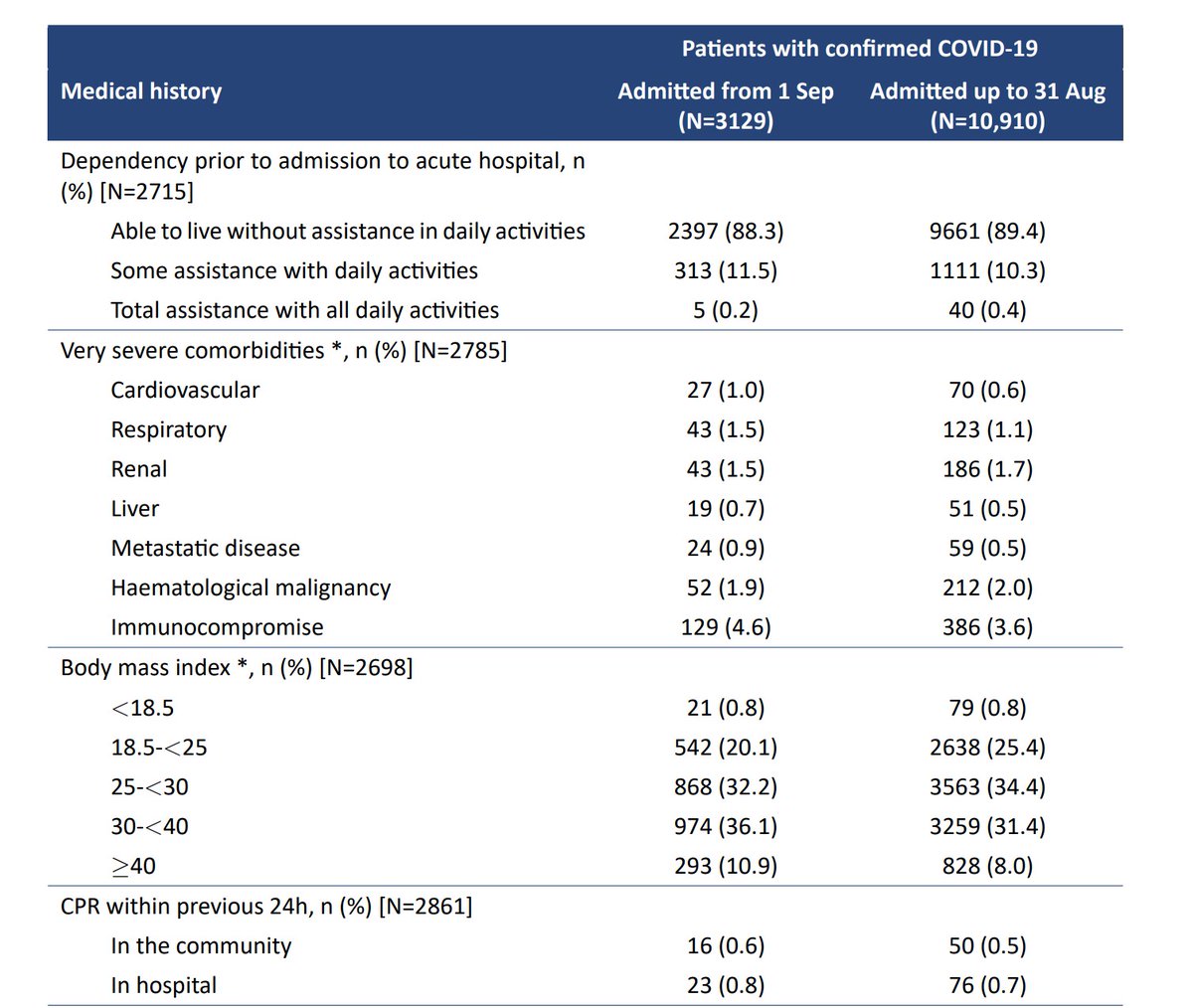
A summary of some key points from @ICNARC's latest weekly update on COVID patients in ICU, on behalf of @ActuaryByDay and @COVID19actuary. New admissions have now risen to 3129 since 1 Sep, with 1263 in the last 14 days. It's still heavily weighted towards the North. 1/9 



The slower growth than in March is very apparent, though numbers are steadily climbing. The last few days will have reporting delays, so need to be taken with a degree of caution. We know that the picture is very varied regionally, so let's take a look at that data too. 2/9 

Except for NI, all areas are well below their first wave peak. Note how London, by population, was hit much worse first time around, so any comparisons with it appear more favourable. In fact, this time rates are broadly consistent with most areas, except for the NW. 3/9 



The comparison with pneumonia and flu continues to show COVID well in excess of either, (although the flu/pneu lines haven't been updated for Oct yet). When comparing the graphs, note the flu one is an order of magnitude lower, and on both the y-axis zero is slightly raised. 4/9 



Turning to patient characteristics, we continue to see over twice as many males admitted, the same as in the first wave. It's good to see ethnic minorities less well represented, less so the increase for more deprived areas. 12% have a severe comorbidity of those admitted. 5/9 



We know that patients have been mainly from the bigger cities - we can see here though that proportionately they are much more likely to be affected - this will clearly correlate with deprivation. By age, 70% of those admitted are under age 70. 6/9 



As numbers grow, we have more data on known outcomes. The 28 day survival rate has edged down to 66.4%, but there is still a clear improvement on the first wave. A 1 in 3 chance of not surviving 28 days is still a sobering statistic though. 7/9 



Next up, two charts that show improved outcomes for all age groups, and notably for black and mixed ethnicities. We can also see that not being ventilated improves outcomes, suggesting much of the improvement we see is from fewer patients needing invasive ventilation. 8/9 



Finally, thanks as always to @ICNARC for this excellent series of insightful weekly reports. And of course thanks to all those on the front line in ICUs (and indeed elsewhere in hospitals) who continue to treat and save many seriously ill COVID patients. 9/9 END
• • •
Missing some Tweet in this thread? You can try to
force a refresh




















